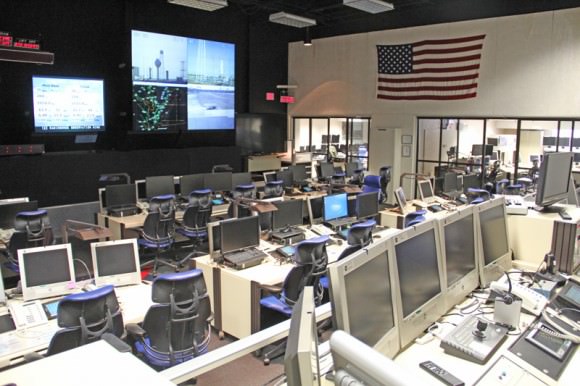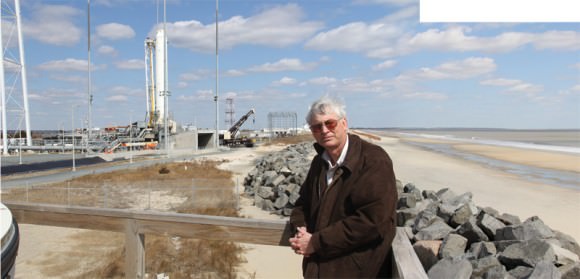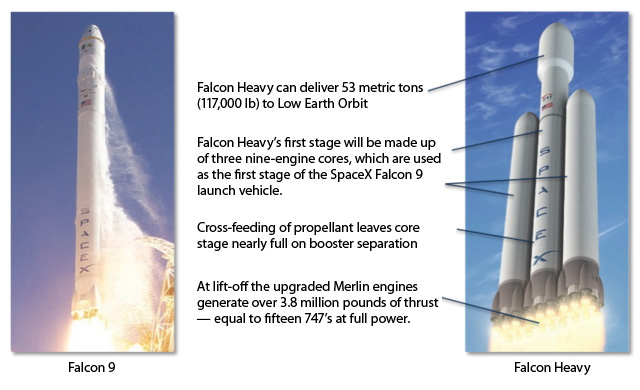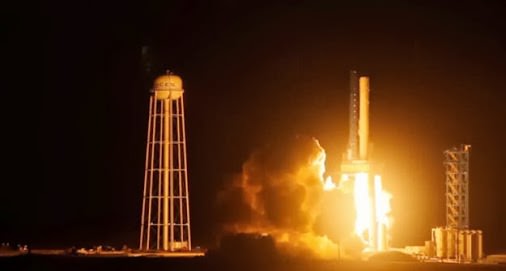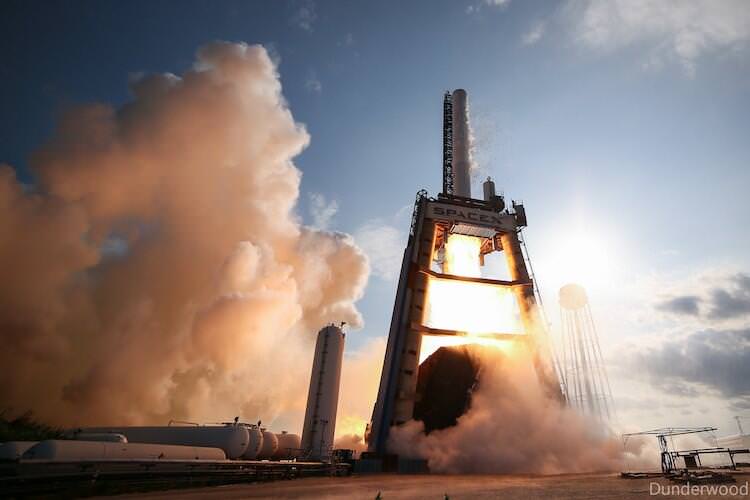Just the fact’s ma’am. This week SpaceX rolled out the new updated look for their website and put out this fact-filled 2-minute drill on the Falcon 9: what it has achieved and the tests for future vertical landings. Enjoy the imagery and the music to get you pumped up.
Spacesuited Astronauts Climb Aboard Boeing CST-100 Commercial Crew Capsule for Key Tests
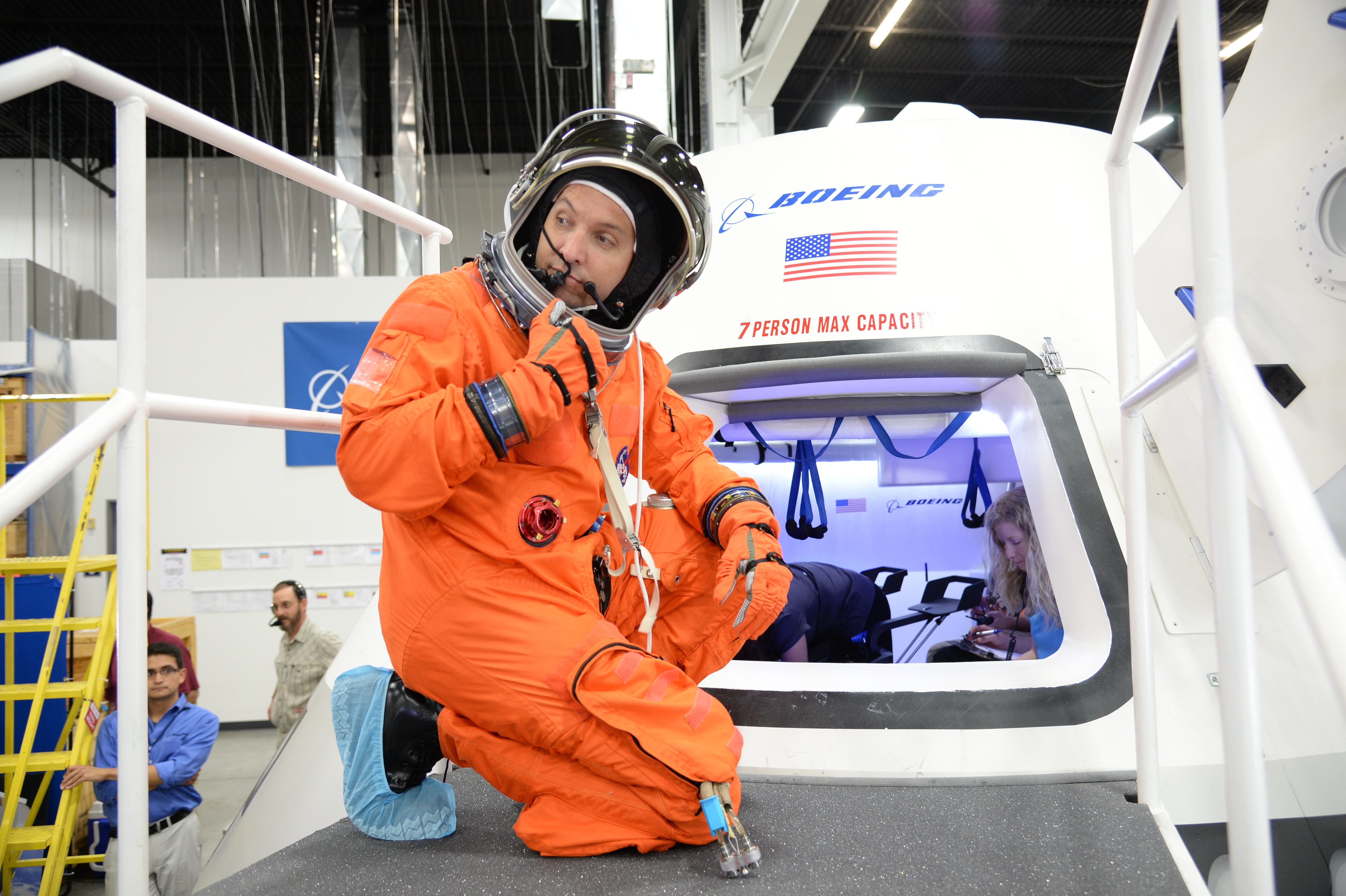
A pair of NASA astronauts donned their spacesuits for key fit check evaluations inside a test version of the Boeing Company’s CST-100 commercial ‘space taxi’ which was unveiled this week for the world’s first glimpse of the cabin’s interior.
Boeing is among a trio of American aerospace firms, including SpaceX and Sierra Nevada Corp, seeking to restore America’s capability to fly humans to Earth orbit and the space station using seed money from NASA’s Commercial Crew Program (CCP).
Astronauts Serena Aunon and Randy Bresnik conducted a day long series of technical evaluations inside a fully outfitted, full scale mock up of the CST-100, while wearing NASA’s iconic orange launch-and-entry flight suits from the space shuttle era.
During the tests, Boeing technicians monitored the astronauts ergonomic ability to work in the seats and move around during hands on use of the capsules equipment, display consoles and storage compartments.
The purpose of the testing at Boeing’s Houston Product Support Center is to see what works well and what needs modifications before fixing the final capsule design for construction.
“It’s an upgrade,” said astronaut Serena Aunon at the evaluation. “It is an American vehicle, of course it is an upgrade.”
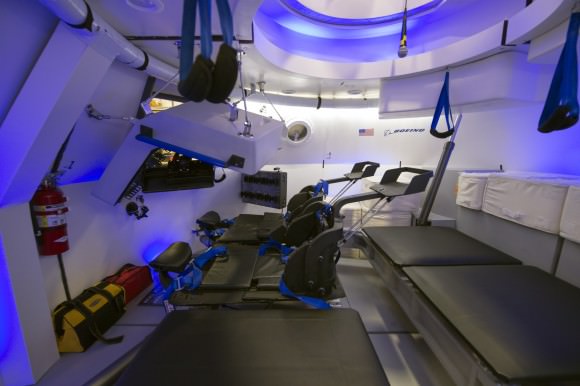
Image Credit: NASA/Robert Markowitz
Former NASA Astronaut Chris Ferguson, the commander of the final shuttle flight (STS-135) by Atlantis, is leading Boeing’s test effort as the director of Boeing’s Crew and Mission Operations.
“These are our customers. They’re the ones who will take our spacecraft into flight, and if we’re not building it the way they want it we’re doing something wrong,” said Ferguson.
“We’ll probably make one more go-around and make sure that everything is just the way they like it.”
The CST-100 is designed to carry a crew of up to 7 astronauts, or a mix of cargo and crew, on missions to low-Earth orbit (LEO) and the International Space Station (ISS) around the middle of this decade.
Although it resembles Boeing’s Apollo-era capsules from the outside, the interior employs state of the art modern technology including sky blue LED lighting and tablet technology.
Check out this video showing the astronauts and engineers during the CST-100 testing
Nevertheless Boeing’s design goal is to keep the flight technology as simple as possible.
“What you’re not going to find is 1,100 or 1,600 switches,” said Ferguson. “When these guys go up in this, they’re primary mission is not to fly this spacecraft, they’re primary mission is to go to the space station for six months. So we don’t want to burden them with an inordinate amount of training to fly this vehicle. We want it to be intuitive.”
The CST-100 crew transporter will fly to orbit atop the venerable Atlas V rocket built by United Launch Alliance (ULA) from Launch Complex 41 on Cape Canaveral Air Force Station in Florida.
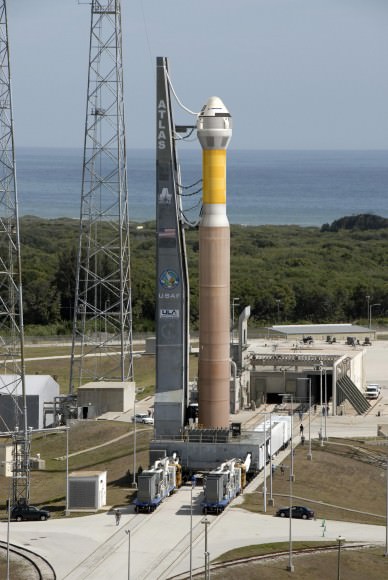
Boeing is aiming for an initial three day manned orbital test flight of the CST-100 during 2016, says John Mulholland, Boeing vice president and program manger for Commercial Programs.
The 1st docking mission to the ISS would follow in 2017 – depending on the very uncertain funding that Congress approves for NASA.
The Atlas V was also chosen to launch one of Boeing’s commercial crew competitors, namely the Dream Chaser mini shuttle built by Sierra Nevada Corp.
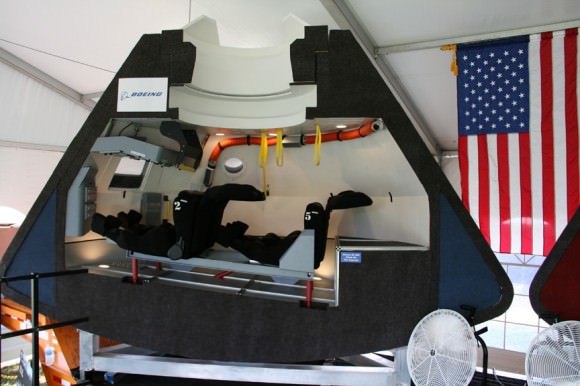
NASA’s CCP program is fostering the development of the CST-100 as well as the SpaceX Dragon and Sierra Nevada Dream Chaser to replace America’s capability to launch humans to space that was lost following the retirement of NASA’s space shuttle orbiters two years ago in July 2011.
Since 2011, every American astronaut has been 100% dependent on the Russians and their Soyuz capsule to hitch a ride to the ISS.
“We pay one of our [ISS] partners, the Russians, $71 million a seat to fly,” says Ed Mango, CCP’s program manager. “What we want to do is give that to an American company to fly our crews into space.”
Simultaneously NASA and its industry partners are designing and building the Orion crew capsule and SLS heavy lift booster to send humans to the Moon and deep space destinations including Near Earth Asteroids and Mars.
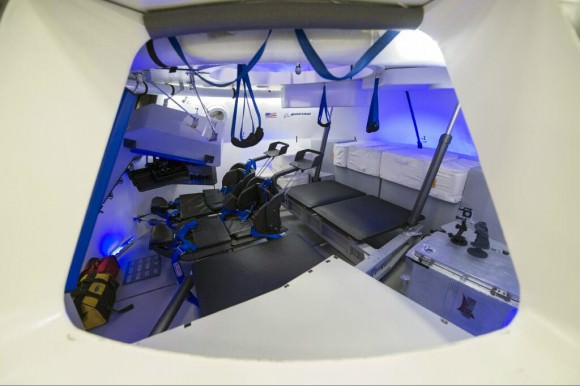
Sierra Nevada Dream Chaser Gets Wings and Tail, Starts Ground Testing
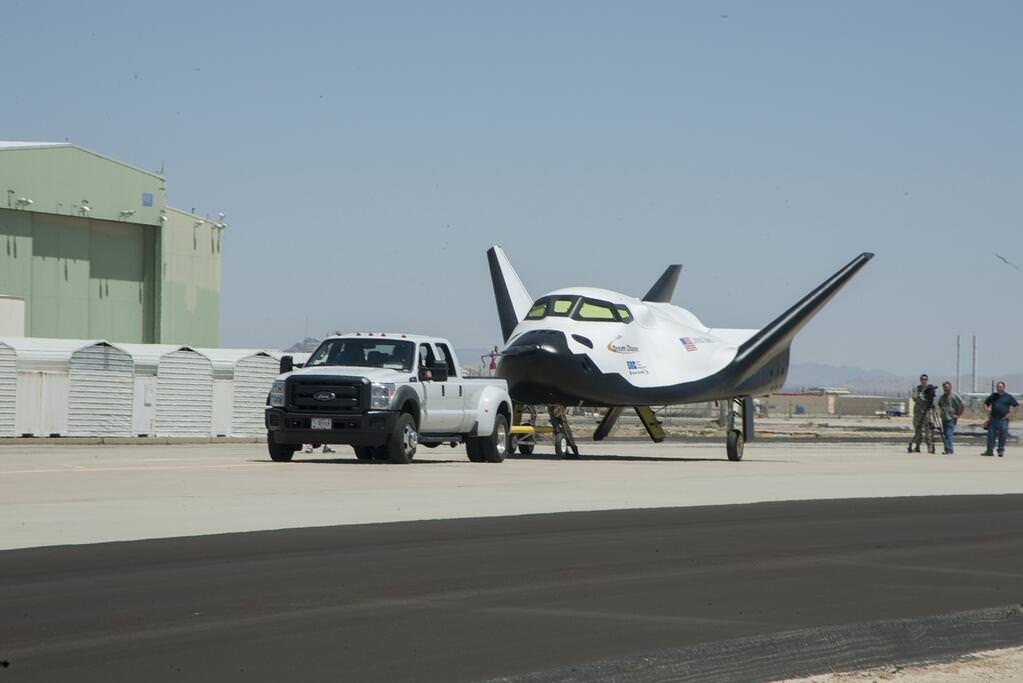
Sierra Nevada Corporation’s Dream Chaser successfully rolls through two tow tests at NASA’s Dryden Flight Research Center in California in preparation for future flight testing later this year.
Watch way cool Dream Chaser assembly video below![/caption]
Sierra Nevada Corporation’s winged Dream Chaser engineering test article is moving forward with a series of ground tests at NASA’s Dryden Flight Research Center in California that will soon lead to dramatic aerial flight tests throughout 2013.
Pathfinding tow tests on Dryden’s concrete runway aim to validate the performance of the vehicles’ nose skid, brakes, tires and other systems to prove that it can safely land an astronaut crew after surviving the searing re-entry from Earth orbit.
The Dream Chaser is one of the three types of private sector ‘space taxis’ being developed with NASA seed money to restore America’s capability to blast humans to Earth orbit from American soil – a capability which was totally lost following the forced shutdown of NASA’s Space Shuttle program in 2011.

For the initial ground tests, the engineering test article was pulled by a tow truck at 10 and 20 MPH. Later this month tow speeds will be ramped up to 40 to 60 MPH.
Final assembly of the Dream Chaser test vehicle was completed at Dryden with installation of the wings and tail, following shipment from SNC’s Space Systems headquarters in Louisville, Colo.
Watch this exciting minute-long, time-lapse video showing attachment of the wings and tail:
In the next phase later this year, Sierra Nevada will conduct airborne captive carry tests using an Erickson Skycrane helicopter.
Atmospheric drop tests of the engineering test article in an autonomous free flight mode for Approach and Landing Tests (ALT) will follow to check the aerodynamic handling.
The engineering test article is a full sized vehicle.
Dream Chaser is a reusable mini shuttle that launches from the Florida Space Coast atop a United Launch Alliance Atlas V rocket and lands on the shuttle landing facility (SLF) runway at the Kennedy Space Center, like the Space Shuttle.
“It’s not outfitted for orbital flight. It is outfitted for atmospheric flight tests,” said Marc Sirangelo, Sierra Nevada Corp. vice president and SNC Space Systems chairman, to Universe Today.
“The best analogy is it’s very similar to what NASA did in the shuttle program with the Enterprise, creating a vehicle that would allow it to do significant flights whose design then would filter into the final vehicle for orbital flight,” Sirangelo told me.
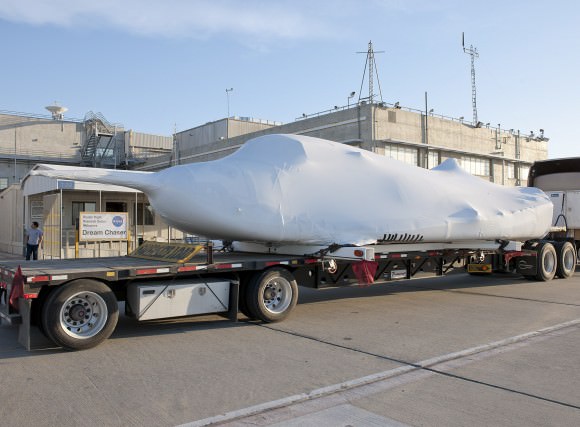
Sierra Nevada Corp, along with Boeing and SpaceX are working with NASA in a public-private partnership using a combination of NASA seed money and company funds.
Each company was awarded contracts under NASA’s Commercial Crew Integrated Capability Initiative, or CCiCap, program, the third in a series of contracts aimed at kick starting the development of the private sector ‘space taxis’ to fly US and partner astronauts to and from low Earth orbit (LEO) and the International Space Station (ISS).
“We are the emotional successors to the shuttle,” says Sirangelo. “Our target was to repatriate that industry back to the United States, and that’s what we’re doing.”
The combined value of NASA’s Phase 1 CCiCap contracts is about $1.1 Billion and runs through March 2014.
Phase 2 contract awards will eventually lead to actual flight units after a down selection to one or more of the companies.
Everything depends on NASA’s approved budget, which seems headed for steep cuts in excess of a billion dollars if the Republican dominated US House has its way.
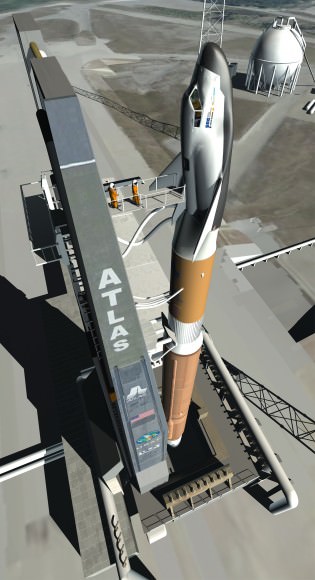
The Commercial Crew program’s goal is to ensure the nation has safe, reliable and affordable crew transportation systems to space.
“Unique public-private partnerships like the one between NASA and Sierra Nevada Corporation are creating an industry capable of building the next generation of rockets and spacecraft that will carry U.S. astronauts to the scientific proving ground of low-Earth orbit,” said William Gerstenmaier, NASA’s associate administrator for human exploration and operations in Washington, in a statement.
“NASA centers around the country paved the way for 50 years of American human spaceflight, and they’re actively working with our partners to test innovative commercial space systems that will continue to ensure American leadership in exploration and discovery.”
All three commercial vehicles – the Boeing CST-100; SpaceX Dragon and Sierra Nevada Dream Chaser – are designed to carry a crew of up to 7 astronauts and remain docked at the ISS for more than 6 months.
The first orbital flight test of the Dream Chaser is not expected before 2016 and could be further delayed if NASA’s commercial crew budget is again slashed by the Congress – as was done the past few years.
In the meantime, US astronauts are totally dependent on Russia’s Soyuz capsule for rides to the ISS. NASA must pay Russia upwards of $70 million per seat until the space taxis are ready for liftoff – perhaps in 2017.
“We have got to get Commercial Crew funded, or we’re going to be paying the Russians forever,” said NASA Administrator Charles Bolden at Dryden. “Without Commercial Crew, we probably won’t have exploration.”
Concurrently, NASA is developing the Orion Crew capsule for missions to the Moon, Asteroids and beyond to Mars and other destinations in our Solar System -details here.
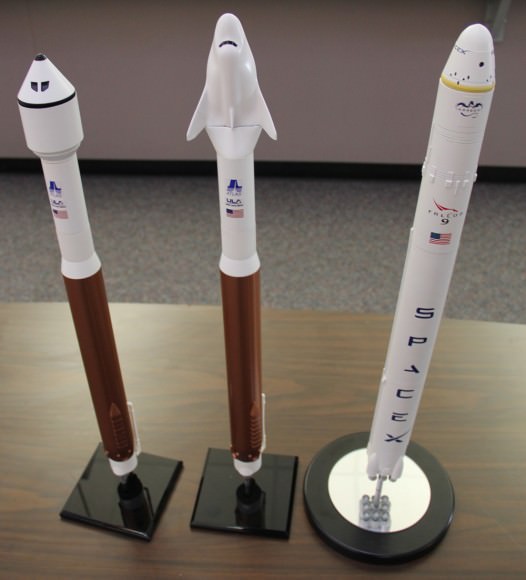
Credit: Ken Kremer/kenkremer.com
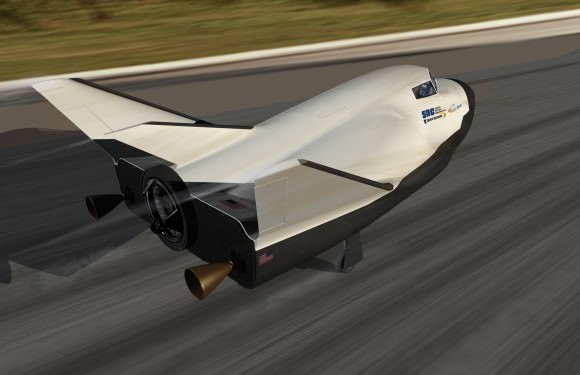
SpaceX Fires Up Falcon 9-R in a Long Duration Test
Last week, SpaceX fired up a new version of the Falcon 9 for a short 10-second test fire. Now, they’ve completed a long-duration fire, lasting 112 seconds. The test was of the first stage of the F9-R, an advanced prototype for the world’s first reusable rocket. The test took place at SpaceX’s rocket development facility in McGregor, Texas. SpaceX noted that unlike airplanes, a rocket’s thrust increases with altitude, and the F9-R generates just over a million pounds of thrust at sea level (“enough to lift skyscraper,” SpaceX CEO Elon Musk said via Twitter) but gets up to 1.5 million pounds of thrust in the vacuum of space.
The rocket engines used on the test is the same as what’s used on the Grasshopper, which is the 10-story Vertical Takeoff Vertical Landing (VTVL) vehicle that SpaceX has designed to test the technologies needed to return a rocket back to Earth intact. While the Grasshopper uses just one Merlin 1D engine, the Falcon 9-R uses nine.
SpaceX hasn’t posted any details about the 9-R on their website, but they have said the Merlin 1-D’s 150:1 thrust-to-weight ratio would be the highest ever achieved for a rocket engine.
SpaceX Tests Falcon 9-R Advanced Reusable Prototype Rocket
Over the past weekend, SpaceX fired up a new version of the Falcon 9, known as the Falcon 9-R, with “R” being for “reusable.” It was the first-ever firing their new advanced prototype rocket. SpaceX told Universe Today the hold-down firing occurred on Saturday, and it lasted for approximately 10 seconds. Elon Musk had tweeted the image above earlier this week, but the company doesn’t normally discuss testing or results, so have not said much about it.
But SpaceX’s communications director Christina Ra did tell us that the Merlin 1D engines used on the test is the same as what’s used on Grasshopper, which is the 10-story Vertical Takeoff Vertical Landing (VTVL) vehicle that SpaceX has designed to test the technologies needed to return a rocket back to Earth intact.
While the Grasshopper uses just one Merlin 1D engine, the Falcon 9-R uses nine, which Musk said via Twitter provides over 1 million pounds of thrust, “enough to lift skyscraper.”
While most rockets are designed to burn up in the atmosphere during reentry, SpaceX’s is hoping their new rocket can return to the launch pad for a vertical landing.
At the end of April Musk had shared another image of first test of the Falcon 9-R ignition system.
Word on the street is that the next test will be a full 3-minute test firing.
Here’s the Grasshopper test flight in April:
Boeing Commercial Space Taxi and Atlas V Launcher Move Closer to Blastoff
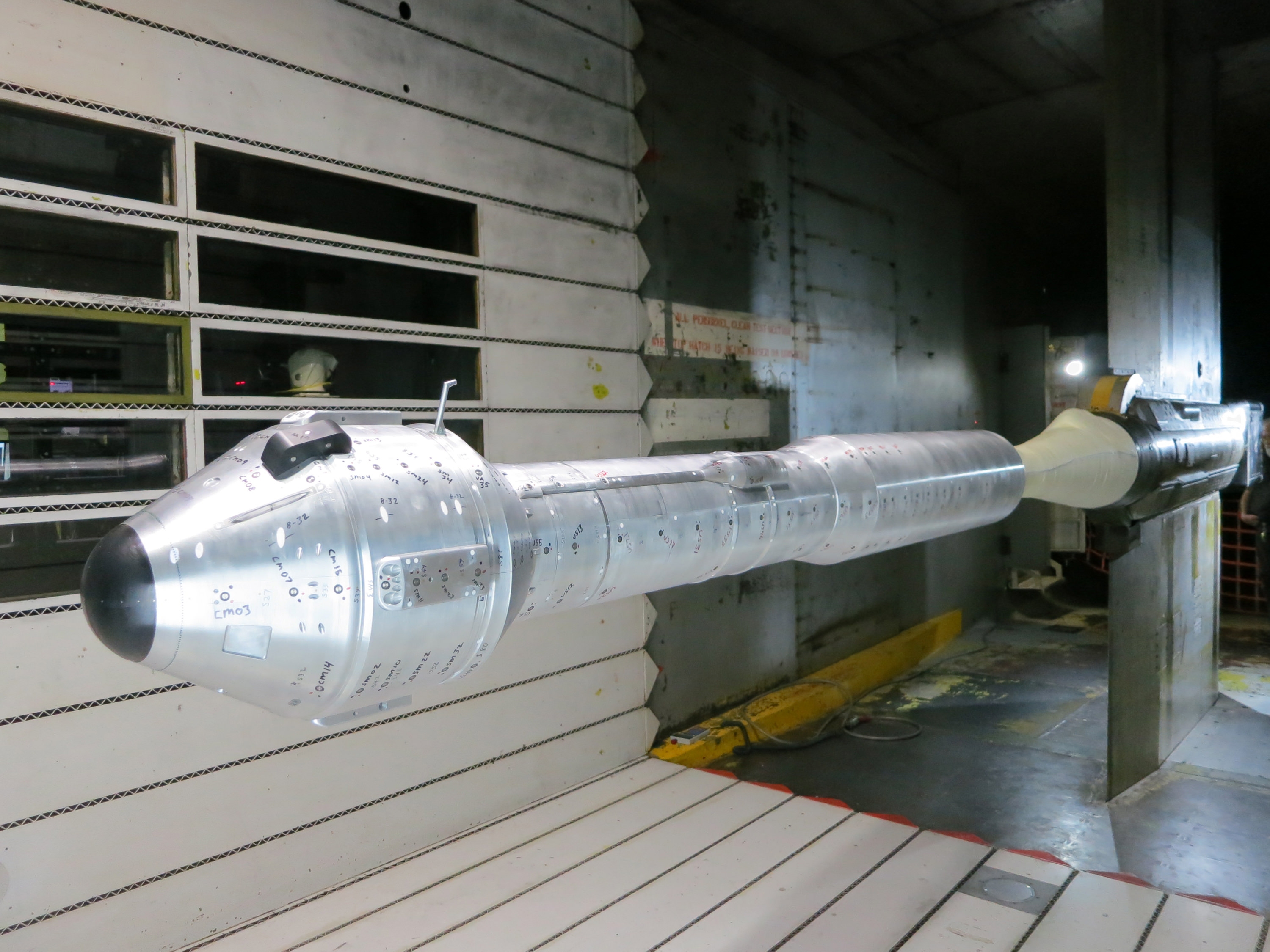
The next time that American astronauts launch to space from American soil it will surely be aboard one of the new commercially built “space taxis” currently under development by a trio of American aerospace firms – Boeing, SpaceX and Sierra Nevada Corp – enabled by seed money from NASA’s Commercial Crew Program (CCP).
Boeing has moved considerably closer towards regaining America’s lost capability to launch humans to space when the firm’s privately built CST-100 crew capsule achieved two key new milestones on the path to blastoff from Florida’s Space Coast.
The CST-100 capsule is designed to carry a crew of up to 7 astronauts on missions to low-Earth orbit (LEO) and the International Space Station (ISS) around the middle of this decade.
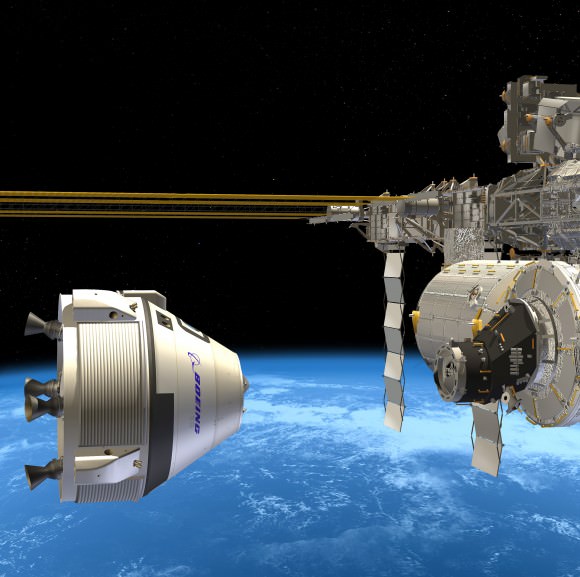
Boeing’s crew transporter will fly to space atop the venerable Atlas V rocket built by United Launch Alliance (ULA) from Launch Complex 41 on Cape Canaveral Air Force Station in Florida.
The Boeing and ULA teams recently completed the first wind tunnel tests of a 7 percent scale model of the integrated capsule and Atlas V rocket (photo above) as well as thrust tests of the modified Centaur upper stage.
The work is being done under the auspices of NASA’s Commercial Crew Integrated Capability (CCiCap) initiative, intended to make commercial human spaceflight services available for both US government and commercial customers, such as the proposed Bigelow Aerospace mini space station.

Since its maiden liftoff in 2002, the ULA Atlas V rocket has flawlessly launched numerous multi-billion dollar NASA planetary science missions like the Curiosity Mars rover, Juno Jupiter orbiter and New Horizons mission to Pluto as well as a plethora of top secret Air Force spy satellites.
But the two stage Atlas V has never before been used to launch humans to space – therefore necessitating rigorous testing and upgrades to qualify the entire vehicle and both stages to meet stringent human rating requirements.
“The Centaur has a long and storied past of launching the agency’s most successful spacecraft to other worlds,” said Ed Mango, NASA’s CCP manager at the agency’s Kennedy Space Center in Florida. “Because it has never been used for human spaceflight before, these tests are critical to ensuring a smooth and safe performance for the crew members who will be riding atop the human-rated Atlas V.”
The combined scale model CST-100 capsule and complete Atlas V rocket were evaluated for two months of testing this spring inside an 11- foot diameter transonic wind tunnel at NASA’s Ames Research Center in Moffett Field, Calif.
“The CST-100 and Atlas V, connected with the launch vehicle adaptor, performed exactly as expected and confirmed our expectations of how they will perform together in flight,” said John Mulholland, Boeing vice president and program manager for Commercial Programs.
Testing of the Centaur stage centered on characterizing the flow of liquid oxygen from the oxygen tank through the liquid oxygen-feed duct line into the pair of RL-10 engines where the propellant is mixed with liquid hydrogen and burned to create thrust to propel the CST-100 into orbit.
Boeing is aiming for an initial three day manned orbital test flight of the CST-100 during 2016, says Mulholland.
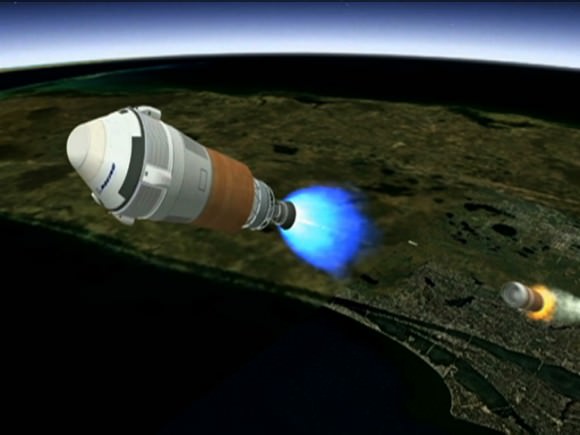
But that date is dependent on funding from NASA and could easily be delayed by the ongoing sequester which has slashed NASA’s and all Federal budgets.
Chris Ferguson, the commander of the final shuttle flight (STS-135) by Atlantis, is leading Boeing’s flight test effort.
Boeing has leased one of NASA’s Orbiter Processing Facility hangers (OPF-3) at the Kennedy Space Center (KSC) for the manufacturing and assembly of its CST-100 spacecraft.
Mulholland told me previously that Boeing will ‘cut metal’ soon. “Our first piece of flight design hardware will be delivered to KSC and OPF-3 around mid 2013.”
NASA’s CCP program is fostering the development of the CST-100 as well as the SpaceX Dragon and Sierra Nevada Dream Chaser to replace the crew capability of NASA’s space shuttle orbiters.
The Atlas V will also serve as the launcher for the Sierra Nevada Dream Chaser space taxi.
Since the forced retirement of NASA’s shuttle fleet in 2011, US and partner astronauts have been 100% reliant on the Russians to hitch a ride to the ISS aboard the Soyuz capsules – at a price tag exceeding $60 Million per seat.
Simultaneously on a parallel track NASA is developing the Orion crew capsule and SLS heavy lift booster to send humans to the Moon and deep space destinations including Asteroids and Mars.
And don’t forget to “Send Your Name to Mars” aboard NASA’s MAVEN orbiter- details here. Deadline: July 1, 2013
…………….
Learn more about Conjunctions, Mars, Curiosity, Opportunity, MAVEN, LADEE and NASA missions at Ken’s upcoming lecture presentations:
June 4: “Send your Name to Mars” and “CIBER Astro Sat, LADEE Lunar & Antares ISS Rocket Launches from Virginia”; Rodeway Inn, Chincoteague, VA, 8:30 PM
June 11: “Send your Name to Mars” and “LADEE Lunar & Antares ISS Rocket Launches from Virginia”; NJ State Museum Planetarium and Amateur Astronomers Association of Princeton (AAAP), Trenton, NJ, 730 PM.
June 12: “Send your Name to Mars” and “LADEE Lunar & Antares ISS Rocket Launches from Virginia”; Franklin Institute and Rittenhouse Astronomical Society, Philadelphia, PA, 8 PM.
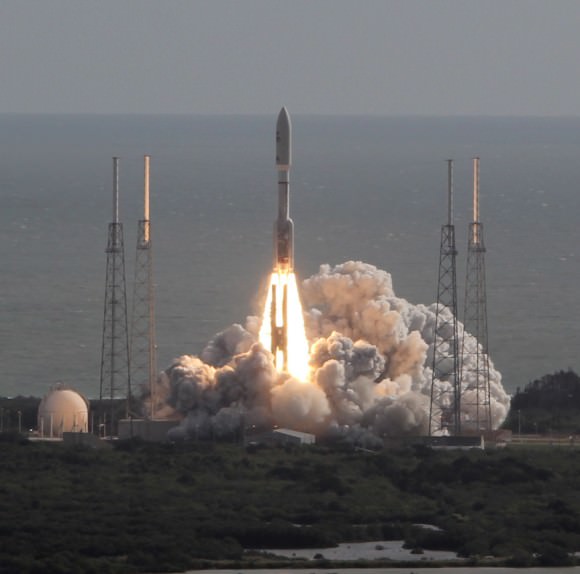

Antares Maiden Soar Pierces Virginia Sky and delivers NASA SmartPhone Pioneer Nanosats to Orbit
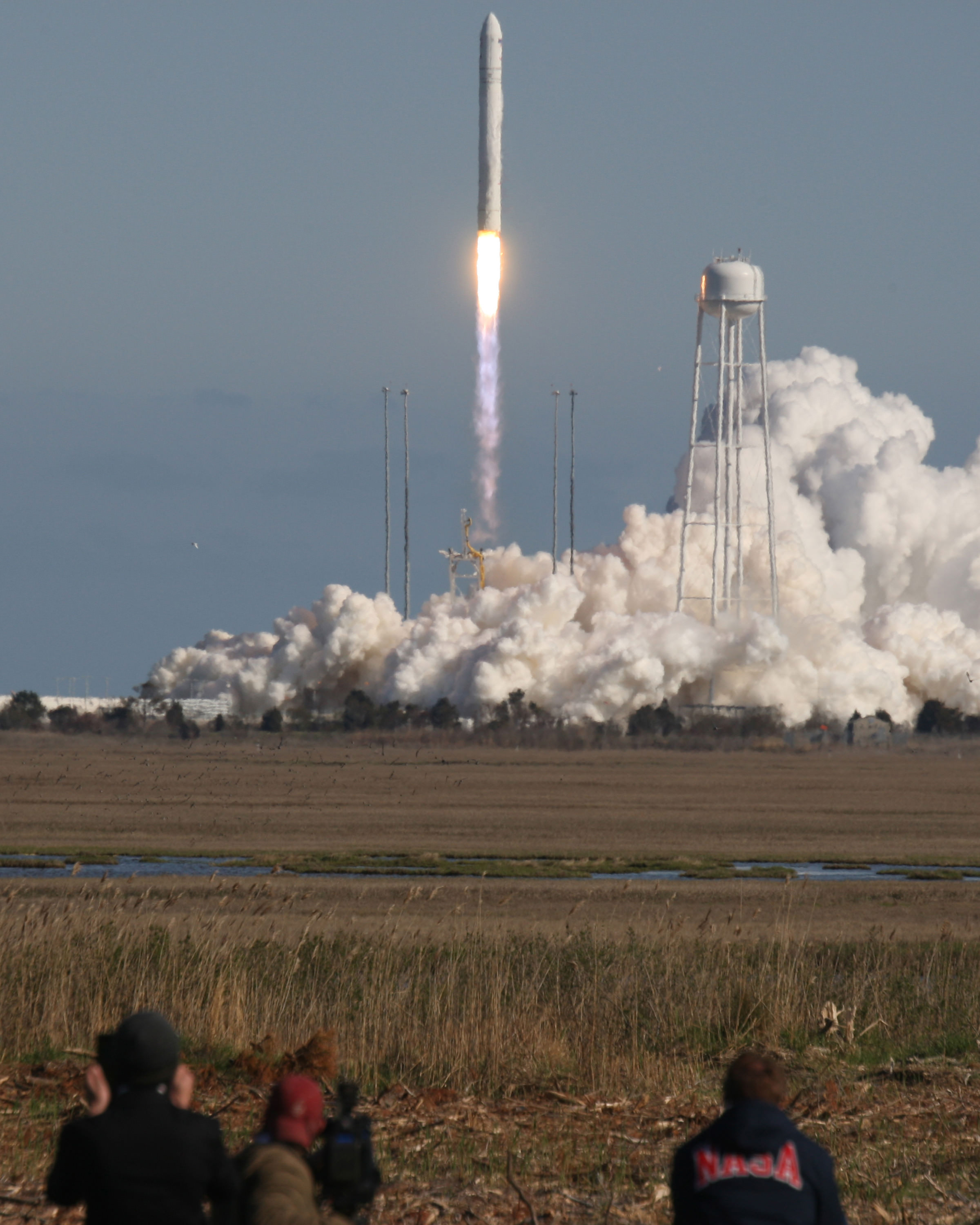
The privately developed Antares rocket built by Orbital Sciences Corp. successfully blasted off on its maiden test flight from the shores of Virginia on April 21 at 5 p.m. EDT from Mid-Atlantic Regional Spaceport (MARS) Pad-0A at NASA Wallops – thereby inaugurating the new commercial space race and delivered a pioneering trio of low cost NASA Smartphone nanosatellites dubbed PhoneSat to orbit.
The 13 story Antares rocket pierced the chilly but cloudless clear blue Virginia skies as “the biggest, loudest and brightest rocket ever to launch from NASA’s Wallops Flight Facility,” said former station astronaut and now Orbital Sciences manager Frank Culbertson.
Antares picture perfect liftoff marked the first step in a public/private collaboration between NASA and Orbital Sciences to restart cargo delivery services to the International Space Station (ISS) that were lost following the forced retirement of NASA’s space shuttle orbiters in 2011.
“Today’s successful test marks another significant milestone in NASA’s plan to rely on American companies to launch supplies and astronauts to the International Space Station, bringing this important work back to the United States where it belongs,” said NASA Administrator Charles Bolden.
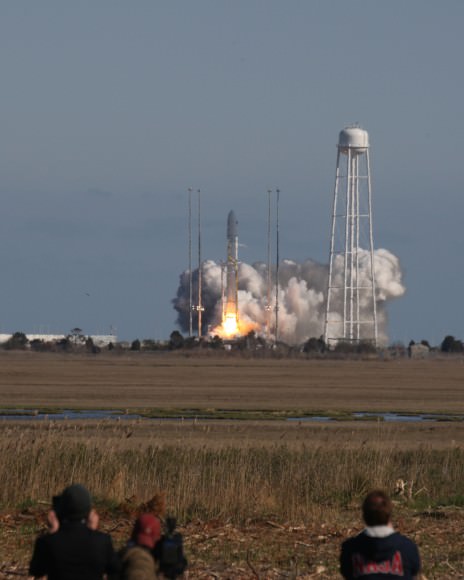
The test flight was dubbed the A-One Test Launch Mission and also signified the first launch from Americas newest space port at Pad-0A.
The primary goal of this test flight – dubbed the A-One mission – was to test the fully integrated Antares rocket and boost a simulated version of the Cygnus cargo carrier – known as a mass simulator – into a target orbit of 250 x 300 kilometers and inclined 51.6 degrees.
Antares also lofted the trio of off-the-shelf-smartphone “PhoneSats” to orbit. The three picture taking satellites are named Alexander, Graham and Bell and could be the lowest-cost satellites ever flown in space.
“The Phonesats cost about $3500 each,” said Andrew Petro, NASA Small Satellite Program executive, to Universe Today. “They are deployed after separation.”
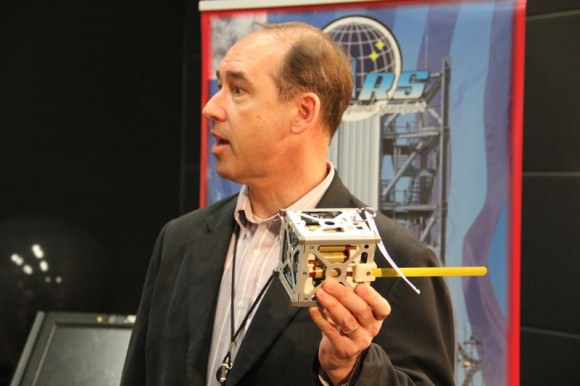
The goal of NASA’s PhoneSat mission is to determine whether a consumer-grade smartphone can be used as the main flight avionics of a capable satellite but at a fraction of the cost.
NASA reports that all three lithium battery powered nanosats are functioning and transmitting data to multiple ground stations.
Two of the cubesats are PhoneSat version 1.0 while the other is the more advanced PhoneSat version 2.0. They were developed by engineers at NASA’s Ames Research Center in Calif.
Each square shaped smartphone measures about 4 inches (10 cm) per side, weighs about 4 pounds and is the size of a coffee mug. The smartphone serves as the cubesats onboard computer – see my photos.
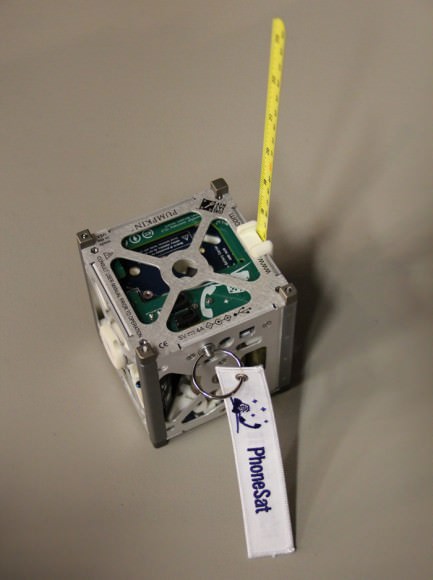
The cameras will be used for Earth photography. Imaging data will be transmitted in chunks and then stitched together later.
The third time was the charm for Antares following a pair of launch scrubs due to a technical glitch in the final minutes of the initial countdown attempt on Wednesday, April 17 and unacceptable winds on Saturday, April 20.
The rocket flew on a southeasterly trajectory and was visible for about 4 minutes.
This test flight was inserted into the manifest to reduce risk and build confidence for the follow on missions which will fly the fully outfitted Cygnus resupply spacecraft that will dock at the ISS, starting as early as this summer.
The two stage Antares is a medium class rocket similar to the Delta II and SpaceX Falcon 9.
The dummy Cygnus payload was outfitted with instrumentation to collect aerodynamic data until separation from the 2nd stage. That marked the successful conclusion of the A-One mission and the end of all data transmissions.
It will fly in earth orbit for about two weeks or so until atmospheric friction causes the orbit to decay and a fiery reentry.
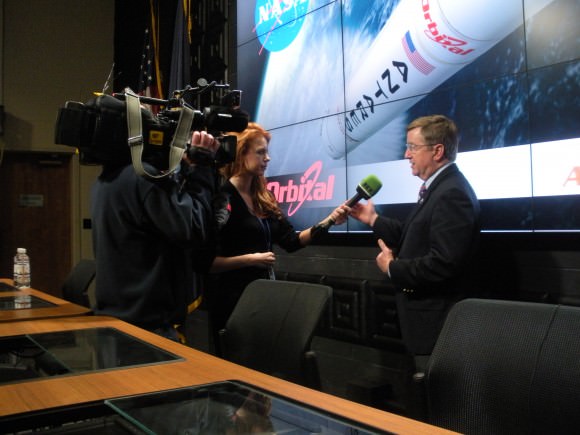
The Antares first stage is powered by dual liquid fueled AJ26 first stage rocket engines that generate a combined total thrust of some 750,000 lbs – original built in the Soviet Union as NK-33 model engines.
The upper stage features an ATK Castor 30 solid rocket motor with thrust vectoring. Antares can loft payloads weighing over 5000 kg to LEO. The 2nd stage will be upgraded starting with the 4th flight.
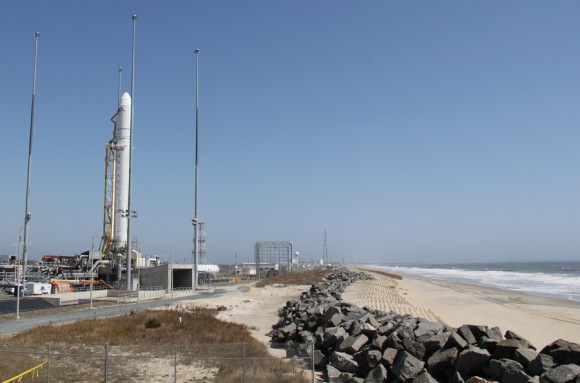
The Antares/Cygnus system was developed by Orbital Sciences Corp under NASA’s Commercial Orbital Transportation Services (COTS) program to replace the ISS cargo resupply capability previously tasked to NASA’s now retired Space Shuttle fleet.
Orbital’s Antares/Cygnus system is similar in scope to the SpaceX Falcon 9/Dragon system. Both firms won lucrative NASA contracts to deliver approximately 20,000 kilograms each of supplies and science equipment to the ISS.
The goal of NASA’s COTS initiative is to achieve safe, reliable and cost-effective transportation to and from the ISS and low-Earth orbit (LEO).
Orbital will launch at least eight Antares/Cygnus resupply missions to the ISS at a cost of $1.9 Billion
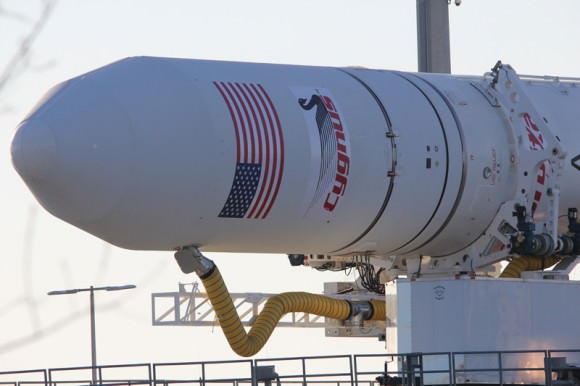
Ken Kremer
…………….
Learn more about Antares, Orion, SpaceX, Curiosity and NASA robotic and human spaceflight missions at Ken’s upcoming lecture presentations:
April 28: “Curiosity and the Search for Life on Mars – (in 3-D)”. Plus the Space Shuttle, SpaceX, Antares, Orion and more. Washington Crossing State Park, Titusville, NJ, 130 PM
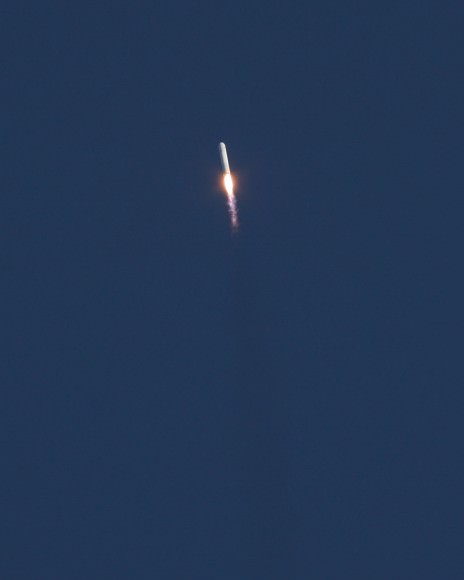
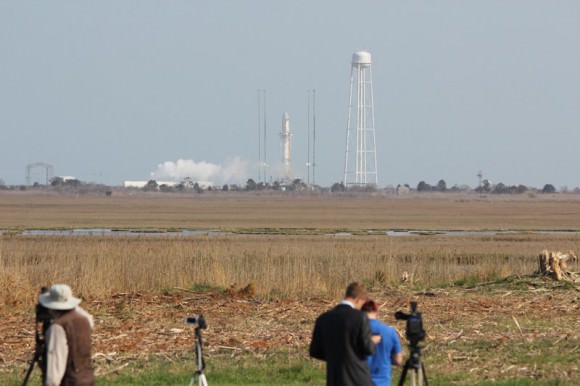
SpaceX Grasshopper Flies High
SpaceX’s Grasshopper flew 250 meters (820 feet) straight up, tripling the height flown on its previous leap. The video provides a great overhead view from SpaceX’s hexacopter.
Via Twitter, SpaceX CEO Elon Musk said the Grasshopper was able to remain steady in its flight even on a windy day, hover and then land.
Continue reading “SpaceX Grasshopper Flies High”
Gallery: Dragon Splashes Down Successfully
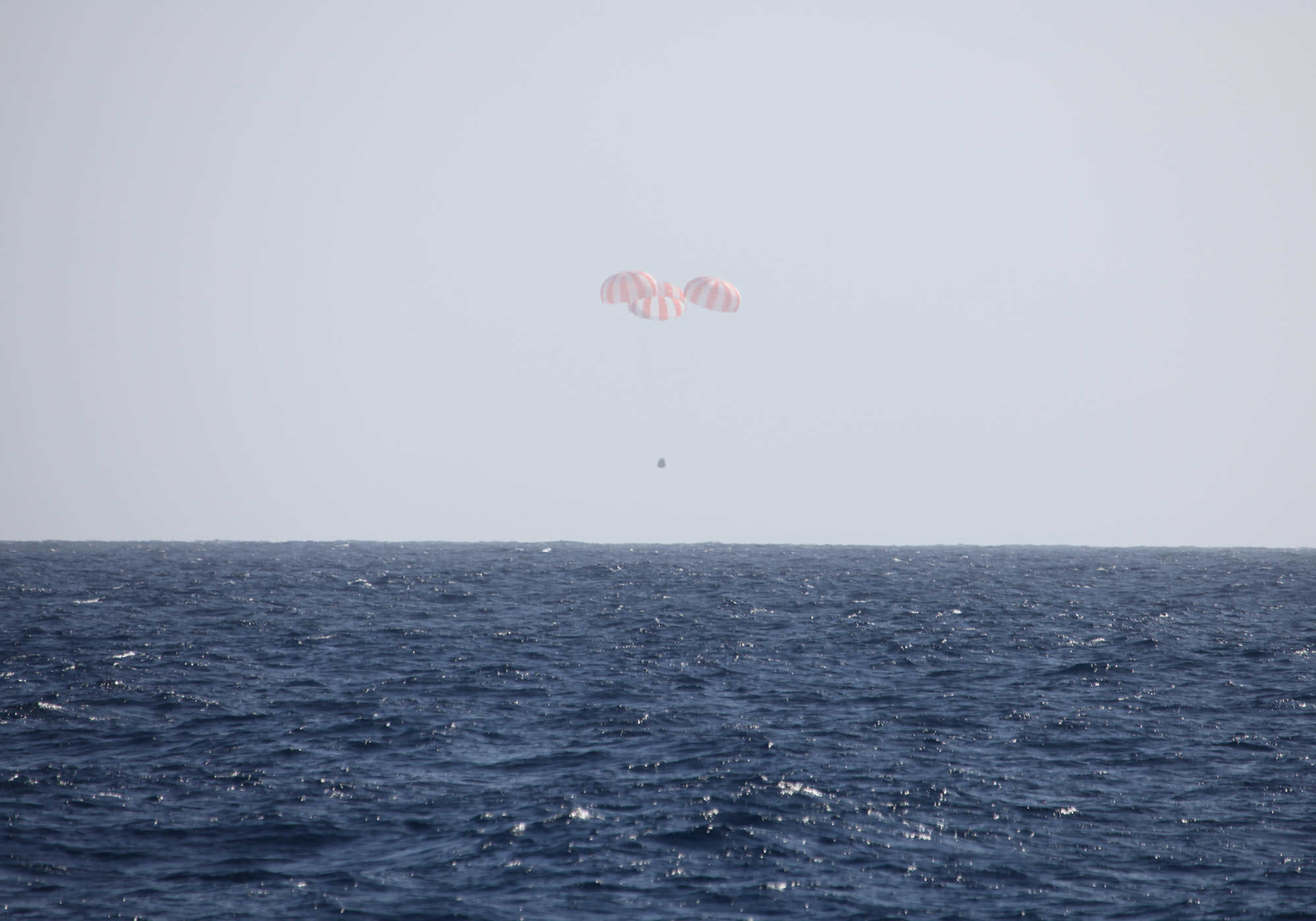
Splashdown! The SpaceX Dragon has returned home safely, splashing down in the Pacific Ocean at 16:36 UTC (12:36 p.m. EDT) on Tuesday, March 26, 2013. “Recovery ship has secured Dragon,” Tweeted SpaceX CEO Elon Musk. “Powering down all secondary systems. Cargo looks A-OK.”
A team of SpaceX engineers, technicians and divers will recover the vehicle off the coast of Baja, California, for the journey back to shore, which NASA said will take 30-48 hours.
The big job will be unloading the 3,000- plus pounds (1,360 kg) of ISS cargo and packaging inside the spacecraft. The Dragon is currently the only vehicle capable of returning cargo and important scientific experiments back to Earth.
“The scientific research delivered and being returned by Dragon enables advances in every aspect of NASA’s diverse space station science portfolio, including human research, biology and physical sciences,” said Julie Robinson, International Space Station Program
scientist. “There are more than 200 active investigations underway aboard our orbiting laboratory in space. The scientific community has
eagerly awaited the return of today’s Dragon to see what new insights the returned samples and investigations it carries will unveil.”
See more images below of Dragon’s return and mission to the ISS; we’ll be adding more as the SpaceX team supplies them!
Here’s a gif image of the splashdown:
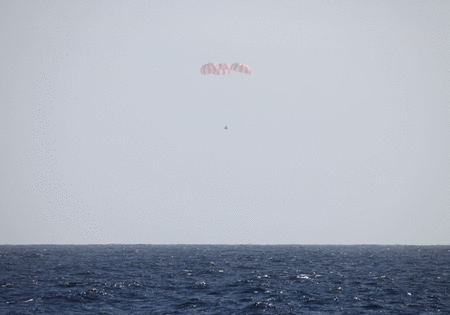
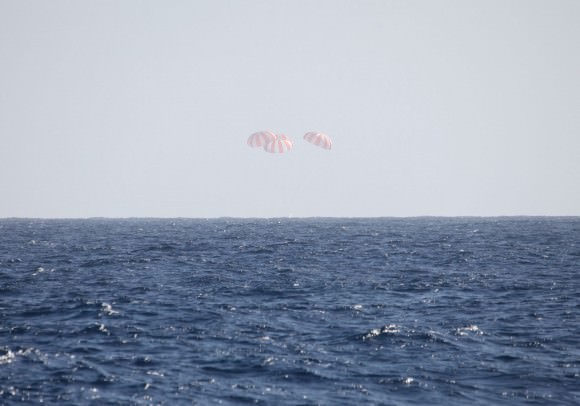
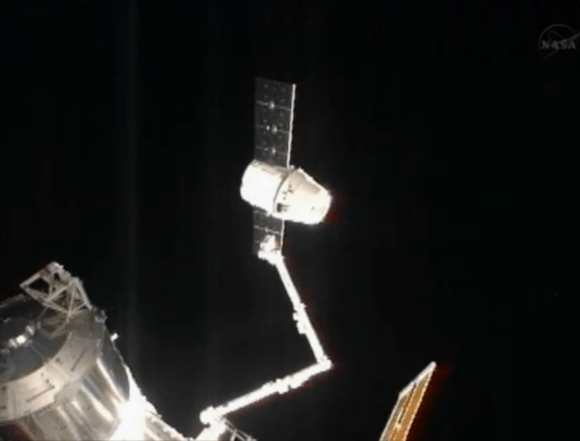
Dragon’s release from Canadarm2 occurred earlier today at 10:56 UTC. The Expedition 35 crew commanded the spacecraft to slowly depart from the International Space Station
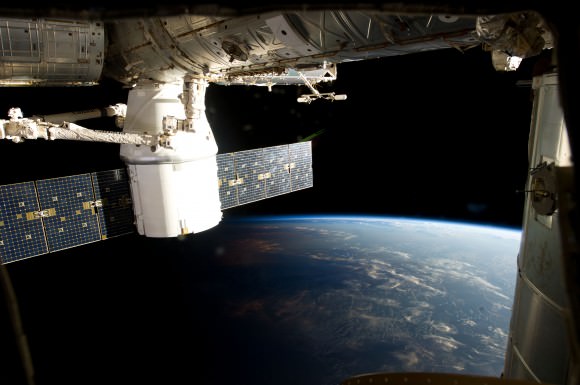
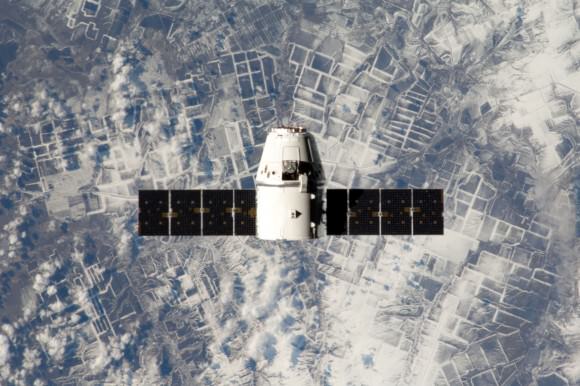
Among the the scientific experiment returned on Dragon was the Coarsening in Solid-Liquid Mixtures (CSLM-3) experiment, which also launched to space aboard this Dragon. CLSM-3 studies how crystals known as dendrites form as a metal alloy becomes solid. The research could help engineers develop stronger materials for use in automobile, aircraft and spacecraft parts.
Dragon also is returning several human research samples that will help scientists continue to examine how the human body reacts to long-term spaceflight. The results will have implications for future space exploration and direct benefits here on Earth.
The mission was the second of at least 12 cargo resupply trips SpaceX plans to make to the space station through 2016 under NASA’s
Commercial Resupply Services contract.
Powerful Private Rocket Crucial to ISS Set for Maiden April Blast Off from Virginia – Launch Pad Gallery
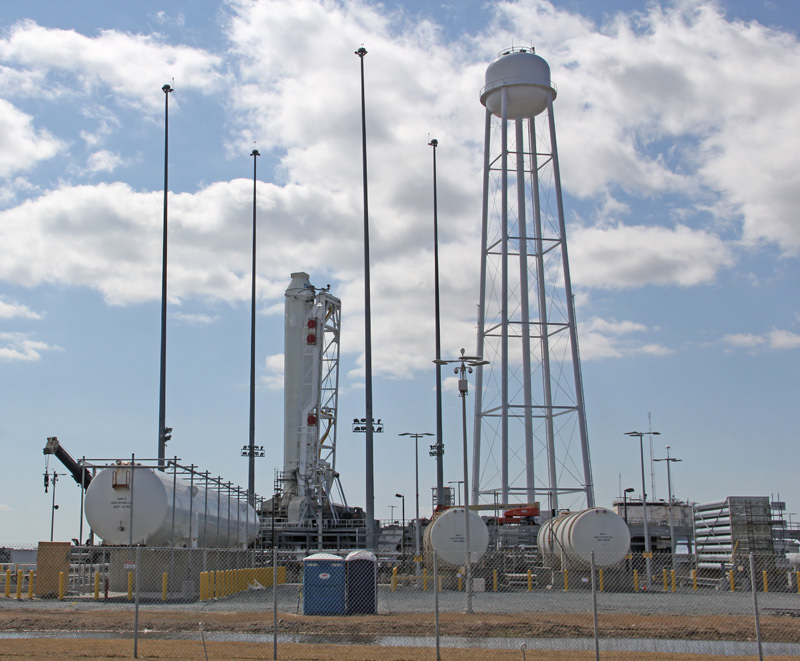
The first stage of the privately developed Antares rocket stands erect at newly constructed Launch Pad 0-A at NASA’s Wallops Flight Facility during exclusive launch complex tour by Universe Today. Maiden Antares test launch is scheduled for mid-April 2013. Later operational flights are critical to resupply the ISS.
Credit: Ken Kremer (kenkremer.com)
See Antares photo gallery below[/caption]
The most powerful rocket ever to ascend near major American East Coast population centers is slated to blast off soon from the eastern Virginia shore on its inaugural test flight in mid April.
And Universe Today took an exclusive inspection tour around the privately developed Antares rocket and NASA Wallops Island launch complex just days ago.
NASA announced that the maiden flight of the commercial Antares rocket from Orbital Sciences is slated to soar to space between April 16 to 18 from the newly constructed seaside launch pad dubbed 0-A at the Mid-Atlantic Regional Spaceport (MARS) at NASA’s Wallops Flight Facility in Virginia.
The two stage Antares rocket is absolutely pivotal to NASA’s plans to ship essential cargo to the International Space Station (ISS) in the wake of the shutdown of the Space Shuttle program in July 2011.
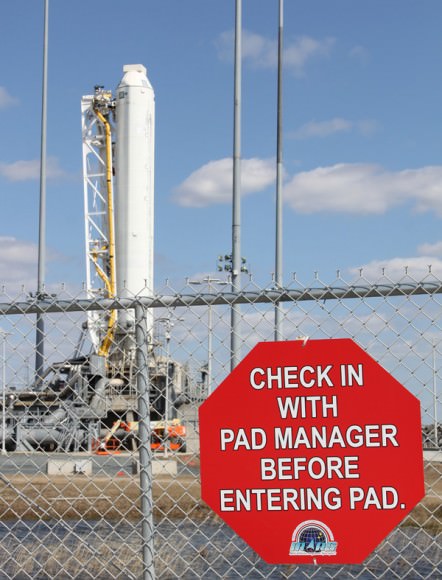
Antares stands 131 feet tall and serves as the launcher for the unmanned commercial Cygnus cargo spacecraft.
Both Antares and Cygnus were developed by Orbital Sciences Corp under NASA’s Commercial Orbital Transportation Services (COTS) program to replace the ISS cargo resupply capability previously tasked to NASA’s now retired Space Shuttle’s. The goal is to achieve safe, reliable and cost-effective transportation to and from the ISS and low-Earth orbit (LEO).
I visited NASA Wallops for an up close personal tour of the impressive Antares 1st stage rocket erected at the launch pad following the successful 29 second hot fire engine test that cleared the last hurdle to approve the maiden flight of Antares. Umbilical lines were still connected to the rocket.
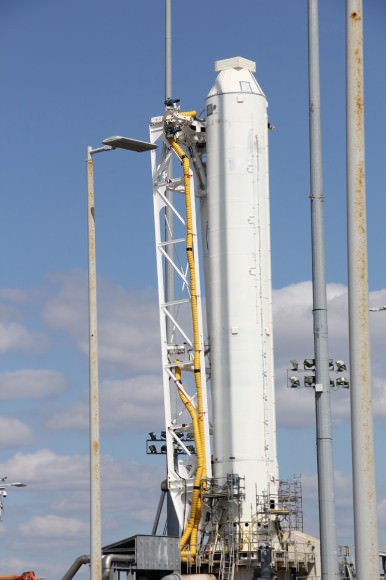
The pads protective seawall was rebuilt following significant damage from Hurricane Sandy, NASA Wallops spokesman Keith Koehler told me.
Launch Complex 0-A sits just a few hundred yards (meters) from Virginia’s eastern shore line on the Atlantic Ocean. It’s hard to believe just how close the low lying pad complex is to the beach and potentially destructive tidal surges.
Barely 400 meters (1300 feet) away lies the adjacent Launch Pad 0-B – from which Orbital’s new and unflown solid fueled Minotaur 5 rocket will boost NASA’s LADEE lunar science probe to the Moon in August 2013 – see my upcoming article.
The maiden Antares test flight is called the A-One Test Launch Mission. It will validate the medium class rocket for the actual follow-on flights to the ISS topped with the Cygnus cargo carrier starting later this year with a demonstration docking mission to the orbiting lab complex.
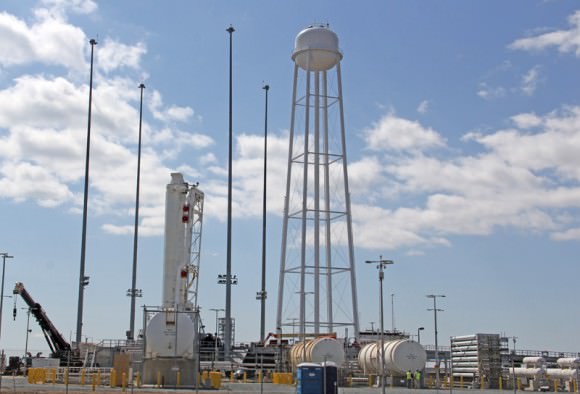
The Antares first stage is powered by dual liquid fueled AJ26 first stage rocket engines that generate a combined total thrust of some 680,000 lbs. The upper stage features a Castor 30 solid rocket motor with thrust vectoring. Antares can loft payloads weighing over 5000 kg to LEO.
The launch window opens at 3 p.m. and extends for a period of time since this initial test flight is not docking at the ISS, Orbital spokesman Barry Boneski told Universe Today.
Antares will boost a simulated version of the Cygnus carrier – known as a mass simulator – into a target orbit of 250 x 300 kilometers and inclined 51.6 degrees.
Antares A-One will fly on a southeast trajectory and the Cygnus dummy will be instrumented to collect flight and payload data.
The simulated Cygnus will separate from the upper stage 10 minutes after liftoff for orbital insertion.
“All launches are to the south away from population centers. Wildlife areas are nearby,” said Koehler.
The goal of the ambitious A-One mission is to fully demonstrate every aspect of the operational Antares rocket system starting from rollout of the rocket and all required functions of an operational pad from range operation to fueling to liftoff to payload delivery to orbit.
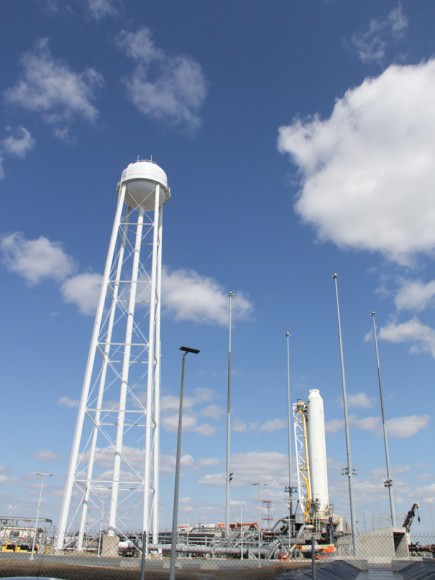
Antares/Cygnus will provide a cargo up mass service similar to the Falcon 9/Dragon system developed by SpaceX Corporation – which has already docked three times to the ISS during historic linkups in 2012 and earlier this month following the tension filled March 1 liftoff of the SpaceX CRS-2 mission.
The Dragon is still docked to the ISS and is due to make a parachute assisted return to Earth on March 26.
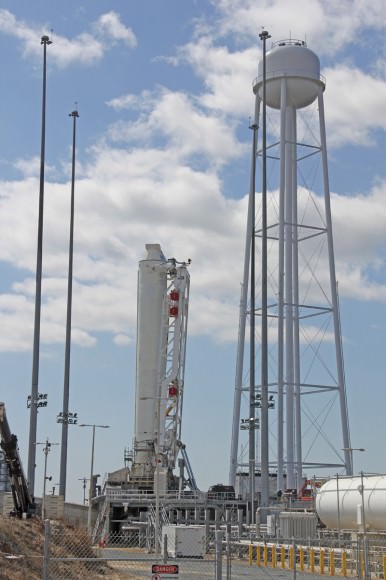
Orbital has eight commercial resupply missions manifested under a $1.9 Billion contact with NASA to deliver approximately 20,000 kilograms of supplies and equipment to the ISS, Orbital spokesman Barry Boneski told me.
Tens of millions of American East Coast residents in the Mid-Atlantic and Northeast regions have never before had the opportunity to witness anything as powerful as an Antares rocket launch in their neighborhood.
Watch for my continuing reports through liftoff of the Antares A-One Test flight.
